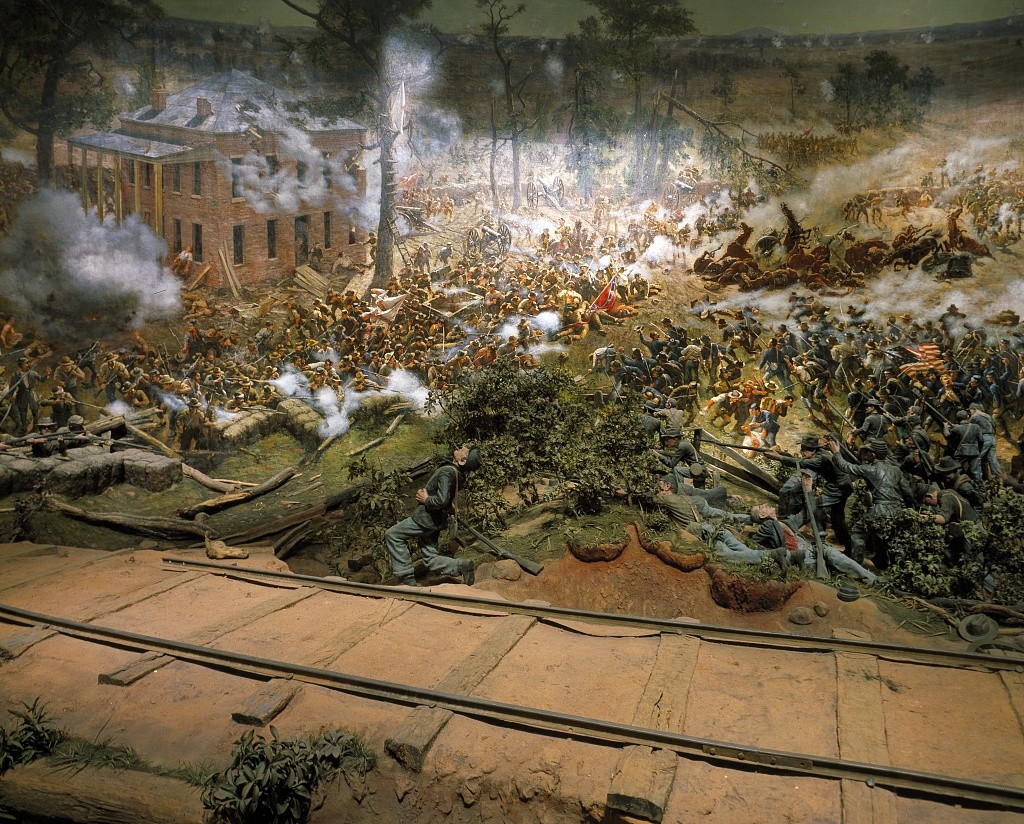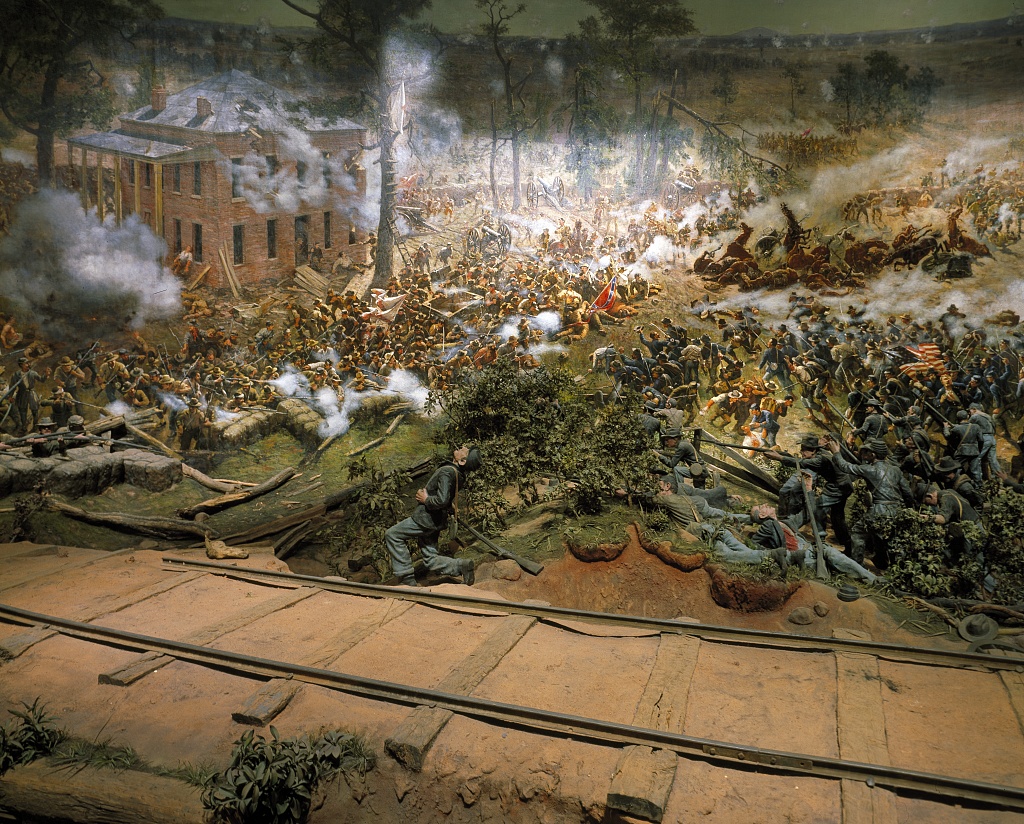GEORGIA: Cyclorama Moved to Custom-Built Home
ATLANTA: Ever since George Jones and his museum acquired one of the world’s largest paintings, they have been puzzling over a basic logistical problem.
The Battle of Atlanta, created 20 German artists in 1886, is as high as a four-story building and longer than a football field. The Atlanta History Center, where Jones is curator, constructed a new building for the painting, but how were they going to remove it from its old, leaky home, where it had been on display since 1921?
The basic answer was: through the roof. Last week two large cranes drew into position on either side of the Atlanta Cyclorama and Civil War Museum. The museum closed in 2015, and since then the enormous painting inside it has been cut in two and rolled up on two upright spindles as hefty as the pillars in the porch of St Paul’s Cathedral in London.
These were to be raised through the roof of the old museum, rotated slowly into a horizontal position, and laid on the flatbed trailers of two trucks that were parked in the road outside.

Atlanta Cyclorama. The Battle of Atlanta was painted in Milwaukee, Wisconsin, in the studios of the American Panorama Company. The company, established in 1883, was commissioned to produce two Civil War cycloramas the Battle of Missionary Ridge (1883-84) and the Battle of Atlanta (1885-86) as well as a series on biblical themes.
The Battle of Atlanta is a cyclorama, one of the vast paintings that were the 19th-century equivalents of an IMAX cinema. Painted by teams, they were designed to wrap around the viewers and bend towards them at the top and bottom, placing them in the middle of the action.
The scene was a crucial civil war battle in July 1864 when Union armies were mustered outside Atlanta. The Confederate General John Hood staged a withdrawal, trying to lure General James McPherson while sending a corps to attack the Union forces from the left and the rear. These maneuvers were mistimed and, though the rebels broke through and McPherson was killed, the Confederates were repulsed with heavy losses. Just over a month later General William Sherman’s forces took Atlanta, aiding Abraham Lincoln’s re-election.
Two decades later, senator John Logan, who had taken part in the conquest of Atlanta and had his eyes on the Republican presidential nomination, commissioned the painting for northern audiences. It would show a counter-attack and an ambulance carrying away McPherson’s body.
The American Panorama Company in Milwaukee hired 20 German artists who interviewed veterans and studied the battlefield. The finished work went on display in the north, Logan died, the company showing it went bust, and it was brought to Atlanta where a few minor alterations were made. A company of Confederate prisoners were repainted as fleeing Union soldiers, and a local newspaper declared it the “Only Confederate Victory Ever Painted”.
It became a shrine, of sorts, to the Confederacy. However, by the 1970s the area surrounding the exhibit had become an African American neighborhood and suggestions by the mayor that it be restored caused an outcry.
In 2014, Atlanta mayor Kasim Reed announced the city would transfer the painting to the Atlanta History Center, which gained a license to display it for 75 years. Once it has been installed at an estimated cost of $US35 million, it will go on display next year.
–The Times






